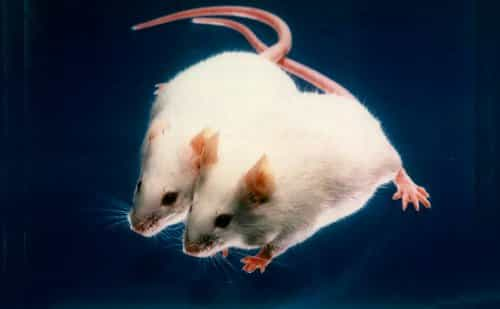KK/TaJcl
Animals/Diabetes Models/

Ordering name: KK/TaJcl
Nomenclature: KK/TaJcl
Availability: Live colony
Not genetically modified animal
Origin
Nakamura et al. found several hyperglycemic animals in a strain of mice with a bent tail that were maintained by Professor Kyoji Kondo for the purpose of genetic research (named KK mouse because it was a K line of mice originating in Kasukabe, Saitama). These mice attracted attention as a type 2 diabetes model. This strain was introduced to Takeda Pharmaceutical Co., Ltd., where they were made specific pathogen-free and more useful. Thereafter, we started the production and supply of this strain of mice.
“Ta” denotes an origin from Takeda Pharmaceutical Co., Ltd.<Ta>
Characteristics
Male KK mice become positive for glucosuria at 17-18 weeks after birth at a frequency of about 80%, even when fed a general diet. When a purified high-carbohydrate and high-fat diet is provided, these mice have high glucose levels at an earlier stage and become glucosuria positive. Because the increase in the glucose level occurs when the body weight exceeds about 35 to 40 g, the accumulation of body fat (obesity) seems to have a primary role in the development of hyperglycemia. A number of genes are thought to be involved in the occurrence of these symptoms.
Female KK mice develop these diabetic symptoms only slightly.
Cautions for the Breeding and Experimentation of Diabetic Model Animals
- Acclimation: Please take 3-5 days of acclimation after transportation to avoid hypoglycemia caused by stress.
- Individual Housing: KK-Ay mice should be individually housed to prevent increases in blood glucose levels due to fighting when group-housed.
- Frequent Bedding Changes: Due to polyuria associated with diabetes, please increase the frequency and amount of bedding changes.
- Consistent Measurement: Blood glucose levels can fluctuate based on diet, measurement methods, and sample type (blood, serum, plasma). Please ensure consistent procedures.
Our Contract Research Services related with This Animal
For details on our contract research services, including cryopreserved embryos, contracted testing, and the provision of research materials such as blood and organs, please click here .


